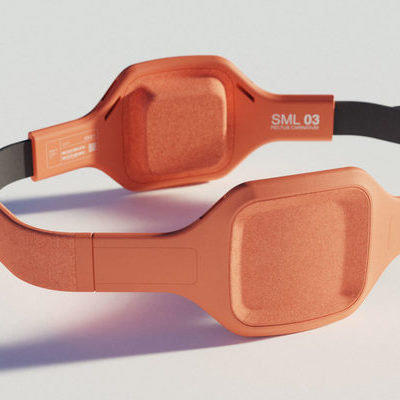PDR tackles Pectus Carinatum with a good-looking, comfortable device
To correct a skeletal disorder in teenagers, medical device manufacturer R&D Surgical Ltd asked industrial design firm PDR to design this special brace. Two, actually: One for males and one for females.

A next-generation brace for the treatment of Pectus Carinatum (often known as pigeon chest) where the breastbone protrudes excessively affecting approximately 1 in 400 children.

Treatment involves compression over time to allow correct bone development. Existing braces are unchanged from the early 20th century. These are uncomfortable, activity limiting, difficult to wear, and difficult to disguise, thus increasing feelings of isolation and stigmatisation for patients who are typically teenage boys.
A NEW BRACE
The new brace is designed to fit neatly and discreetly beneath clothes using contemporary materials and easy-to-use mechanisms to create a more comfortable, clinically effective solution.

A SOFT TOUCH
The brace is slimline in nature using a combination of materials including elastomers and technical fabrics to aid comfort and fit. The unit is fully adjustable to produce a tailored and asymmetric fit as necessary to allow for comfortable all-day wear without chafing, excessive discomfort and bulkiness under clothing.

OPTIONS
Available in three sizes with multiple adjustments allow the user to easily adjust the device to their own requirements.

A pectus carinatum brace designed specifically for the teenage, female form with a neat, discreet and comfortable fit.

Up to 4 million children each year are thought to be affected by pectus carinatum, also known as pigeon chest. While the condition mainly affects teenage boys, girls also suffer with the condition. Clamping the breastbones to allow them to grow correctly is an effective treatment but current frames are unchanged from 80-year-old designs, uncomfortable, debilitating and crucially not designed to fit a female form.

The new brace is specifically designed for the teenage female form, to fit neatly and discreetly. Worn beneath clothes, it uses contemporary materials and mechanisms to create a more comfortable, clinically effective and discrete solution. This is the first innovation in the treatment of pectus carinatum for many years and there are no other competing products that take a similar approach. The organisation, established by a small group of practicing paediatric clinicians, believes strongly in a holistic approach to treatment that recognises emotional as well as physical wellbeing. The female brace product is their second product which places at its core a very human-centred approach and deep understanding of user needs.

Structural design, alongside careful ergonomic study, run parallel with requirements around patient comfort and wellbeing, to ensure effective treatment. Chromed metal bars and clamps are replaced with a slimline metal and Delrin subframe, that provides the underlying structure through which compression forces are applied. This subframe is enclosed with padded and breathable fabric outer that provides a comfortable and approachable form, that can fit underneath clothes and allow for discreet, comfortable use with an aesthetic more acceptable and less stigmatising to teenage users.

Clinical study to date has proved the device to be both effective and strongly liked by teenage girls who suffer with the condition. Treatment at this stage, while bones are still developing, cures the problem of protrusion which in turn prevents complications such as breathing difficulties and chest pain emerging. The greatest impact however is outside of the physical and relates to perceptions of body image and self-confidence, so critical in teenage years. Treatment can be up to 24 months and the device is designed to be returned, the fabric and padding, which are easily removed for cleaning, replaced, and reissue to a new patient.

The product can be easily set up and adjusted by a clinician to the subject, and compression forces applied with the slimline ratchets on each side of the product. As a subject grows the product can be easily adjusted without tools to accommodate this. Trials indicate the more distributed force and greater comfort of the device ensures longer use and better outcomes in a shorter time. The comfort and ability to wear beneath clothes allows users to carry on with their daily lives with minimal disruption.
You can see more of PDR’s work here.

